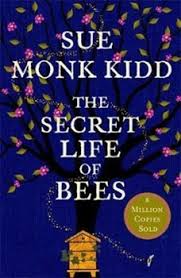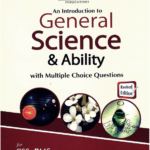Description
About the Author: Sue Monk Kidd’s novel “The Secret Life of Bees” dates back to 2001 and happened in South Carolina during 1964, within the framework of the Civil Rights Movement. This second novel continues to tell the story about Lily Owens, this time a young girl, who embarks on the mission of finding the truth and solace about her mother, and along the way discovers things about herself. The motifs of race, family, loss, and identity, all feature under which one will see a sensitive story telling about personal and social change.
Overview :
Synopsis:
Lily Owens, 14-year-old white girl from South Carolina, lives under the roof of her vicious father, T. Ray Owens, but she cannot stop recalling her mom, Deborah, whom she accidentally killed when she was four years old. All that Lily has left in connection to her mother are a photo of Deborah, a pair of gloves, and a picture of a Black Madonna with “Tiburon, South Carolina” written on the back of the card.
Things quickly go downhill for Rosaleen Daise, Lily’s Black housekeeper and caretaker, when she attempts to register to vote but gets beaten and jailed. Lily decides to break Rosaleen out of jail; the two escape to Tiburon in search of answers about Lily’s mother.
In Tiburon, they find the Boatwright sisters: August, June, and May, three Black women keeping bees and selling honey under the label featuring the Black Madonna. The sisters take in Lily and Rosaleen; and Lily begins to learn the art of beekeeping from August as she tries to fit in with the household family and heal over those emotional wounds, her mind now bringing her into guilt-fraught thoughts over her mother’s death.
Over time, Lily discovers that her mother had stayed with the Boatwrights sometime in the past, and truth about her mother’s disordered life slowly starts to unravel. She also undergoes the tight intrafamilial ties of the sisters as well as all the struggles as Black women in the segregated South. She befriends Zachary “Zach” Taylor, a Black boy who works on the farm and shares her big dream of someday becoming a lawyer; the point being that their friendship is burdened by the racial tension of the period.
The novel goes to emotional climax when the most sensitive sister, May, takes her life because she cannot bear the pains of the pains of the pains of the world’s sorrows. The family draws closer together over this event and in that instance propels Lily towards rummaging about in her painful past.
In the end of the novel, Lily learns how to forgive herself and understand the complicated nature of love, loss, and family. She finds a home in the Boatwright sisters because she realizes that one family is not only defined by blood but also by bonds, especially those we create.
2. Themes:
Motherhood and Family: The novel opens up with all the complexity of motherhood, especially the desire of Lily for her dead mother and finding mothers in the Boatwright sisters, especially in August. Suggesting that motherhood is not only biological but resides in nurturant relations between women, this novel finds it has taken Lily on a journey of family from unsuspected places, and love and care transcending all barriers.
Race and Racism: Considering it is a Civil Rights Movement novel, issues revolving around race and racism are very paramount because in the South, there is systemic racism against the Black people. The Boatwright sisters being successful business owners still are met with their forms of discrimination and, worse still, being threatened with assault. Lily, brought up in a world of racial ideas, has to meet these ideas face-to-face and overcome them to see people like Rosaleen and Zach as her equals. The novel underlines the necessity of love and the strength of the “human passion” that will overcome the racial divides between them.
Identity and Self-Discovery: Lily’s quest to learn about her mother really becomes the greatest metaphor ever for self-discovery. As she learns the truth about her mother, so she learns more about herself—her strengths, her capacity for love, and her place in the world. One of the strongest themes of the novel is self-acceptance and a clear understanding of one’s own identity.
Guilt and Forgiveness: The main central theme of this novel is Lily’s guilt over her mom’s death. She had left her, so she had killed or deserted her mom. It is an illusion that keeps her propping up much of the book. Eventually being able to forgive herself heals Lily emotionally as well. Another part of this novel is forgiveness towards others, letting go of the past to step forward into a new future.
Spirituality: The Black Madonna is a badge of divinity bestowed upon feminine stature, and to the Boatwright sisters is quite highly spiritual, a source of strength and comfort to Lily. The novel finally manifests the pervading themes of spirituality especially in exploring themes of empowerment through feminine divinity. Even the bees represent life, community, and resilience, indicating the interconnection of the characters’ lives.
3. Character Development:
Lily Owens: The novel’s protagonist, Lily, undergoes this coming-of-age story which revolves around her growth. She begins at the beginning brimming with guilt, loneliness, and confusion as to where exactly she fits into the world. Throughout the novel, she is growing emotionally, learning to forgive herself and understand who she is. Her relationships with Rosaleen, August, and the Boatwright sisters allow her to experience love and belonging in ways she never had before.
Rosaleen Daise: The caretaker of Lily, a strong woman who survives hardships, waits for the day when she can exercise her right to vote. Her life with Lily draws them closer together; she is now a mother to Lily as much as being independent and moving alone. Rosaleen, as a mother in the unconventional sense of motherhood, is of significance in the novel.
August Boatwright: August is the elder of the Boatwright sisters, wise and nurturing, teaches Lily how to care for the bees, in other words, teaches her about life. It is the voice of wisdom, patience, and strength beside which Lily’s hurt sobriety heals. Through her, August Boatwright can also be described as representing better qualities in terms of power and victoriously appealing as the epitome of a Black female who surmounted the crushing racist majority in society.
Zachary “Zach” Taylor: Zach is ambitious yet kind, and his friendship with Lily provides an endearing dynamic to the novel. Zach’s potential romance is complicated by the racial tensions of the novel, helping to open Lily’s eyes to the realities of the world. He represents hope and possibility in the overcoming of racial barriers.
May is the most fragile of the sisters and is burdened with other people’s suffering, which becomes too much for her to bear. June fights Lily at first, but takes her in and becomes able to tolerate her. The Black Madonna is, for the Boatwright sisters, a spiritual icon of strength that can sustain women and can eventually sustain Lily.
4. Themes of Nature and Symbolism:
The Bees: It is the bees that truly centralize the imagery and themes in the novel: community, work, and cycles of life. Also, they are linked to Lily’s personal transformation with August through learning from him about complex social systems and strength. The women strength in the novel is symbolized in the bees, which can build, tending safely in an environment riddled with adversity.
The Black Madonna: The Black Madonna is the symbol of feminine power, strength, and compassion. She represents an otherworldly character who moves beyond the confines of race and brings about solace and hope in the characters. For Lily, the Black Madonna becomes an empowerment-giver as she learns to navigate her own life’s challenges.
5. Historical Context:
The novel is thus set against the vivid backdrop of the Civil Rights Movement of the 1960s in the United States, particularly the South; the racial tensions in the book, after all, represent greater struggles for equality and justice between the Black Americans. The events of Rosaleen’s arrest and Zach’s understanding of the same underline the elements of violence and discrimination that most permeated this time of history.
Conclusion:
The Secret Life of Bees is a heart-wrenching novel about love, loss, forgiveness, and a quest for identity in the eyes of Lily Owens. Through her work, Sue Monk Kidd examines complicated race, family, and female power dynamics. It’s not only a story of personal growth but also an extension onto the broader social issues of the time-a fight for racial equality. This novel captures, in a story rich with deep symbolism, tender moments, and emotional depth, the humbling resilience of the human spirit against pain and other adversities.










Reviews
There are no reviews yet.